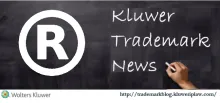When words are not enough
July 3, 2019
We all know the iconic Aspirin® paper package with the white and green parallel portions against which the name of the product is written in black letters:

This package stands out from other pain killer packages sold over the counter (OTC) such as for example


or
Recently a Greek pharmaceuticals company decided to change its pain killer package and adopt a new one. The old package of the Greek company was

and the new one is

The name of the pain killer of the Greek company is “Salospir”.
The active ingredient is Acetylsalicylic Acid, just like Aspirin®, and both products (Aspirin® and Salospir) are sold OTC.
The old Salospir package is very characteristic, long used and well known among Greek consumers.
The Greek company filed an EUTM application on 28.11.2013 (no 012351458) for the new Salospir logo in class 5, as follows:

It also filed an EUTM application for the old Salospir logo on the same day (no 012349536), as follows:

and had older Greek trademark registrations for the old package, such as no 218069 (filed on 11.9.2012):

The owner of the Aspirin® trademark (Bayer) attacked the first EUTM application of the new Salospir only, with an opposition. The opposition was dismissed and the dismissal was affirmed at second instance and before the General Court (T-216/17, published on 24.10.2018). The case at issue was not further appealed before the CJEU and therefore the new Salospir EUTM was recently registered.
The European courts have found that a smell and packaging imitation is enough for protection to be granted even when the name of the product is totally different to the name of the earlier trademark. This was clarified in L’ Oreal SA v. Bellure NV (C-487/07), a smell alike case, where the CJEU asserted in its preliminary ruling that the taking unfair advantage of a mark does not require the existence of a risk of confusion. Namely that even though the names of the products may be different this does not mean that a package imitation may not infringe an earlier right on the basis of dilution (unfair advantage).
In a recent case, the General Court (T‑398/16, published on 16.1.2018) found that a logo resembling the Starbucks characteristic mermaid logo was confusingly similar to it, even though it contained words that were totally different to Starbucks, namely “Coffee Rocks”, as follows:

was found to be confusingly similar to

Even more recently, a Fifth Board of Appeals of the EUIPO ruling (on case R2170/2018-5, published on 15.5.2019) found that a third party logo was likely to take unfair advantage of the LEGO mark, even though it consisted of a different word element, namely “GUDI”, as follows:


was found to be similar to
taking into account, inter alia, the “overall visual arrangement” of the two signs.
Another recent example in Greece, includes ruling 1008/2018 of the First Instance Civil Court of Athens (published in Commercial Law Review 2018, 3rd Issue, p.717), where the court found that the shape of a bag imitating that of a prior one constitutes infringement, even though the names imprinted on the bags were totally different. The case was based on unfair competition which provides for protection of unregistered rights and its rationale is similar to the unfair advantage in the context of trademark dilution in the EU.
It is hard to see how in practice the consumers encountering the two products / packages in the market, the Aspirin® and the new Salospir, will be able to distinguish them, upon or post sale, given their overall visual similarity. It is even harder to see how consumers (and even pharmacists) will not be making a link between the two products, an automatic reaction when one encounters the new Salospir; and how goodwill of the Aspirin® mark will not be transferred to the new Salospir, contributing ultimately also to the risk of the Aspirin® mark becoming generic. Many consumers already mistakenly believe that Aspirin® is a kind of pharmaceutical and not a trademark and the market result here could enhance this impression.
Usually trademark laws provide for adequate protection to brands and consumers, however there are times, where the application of these laws by courts, leads to results opposite to those a consumer might expect. Irrespective of the legal and factual particularities of the Salospir case, not analysed in the present note, it appears that this case could also fall within this category, where the judicial outcome is different to that which the average consumer might possibly expect on the basis of his/her own perception.
You may also like











